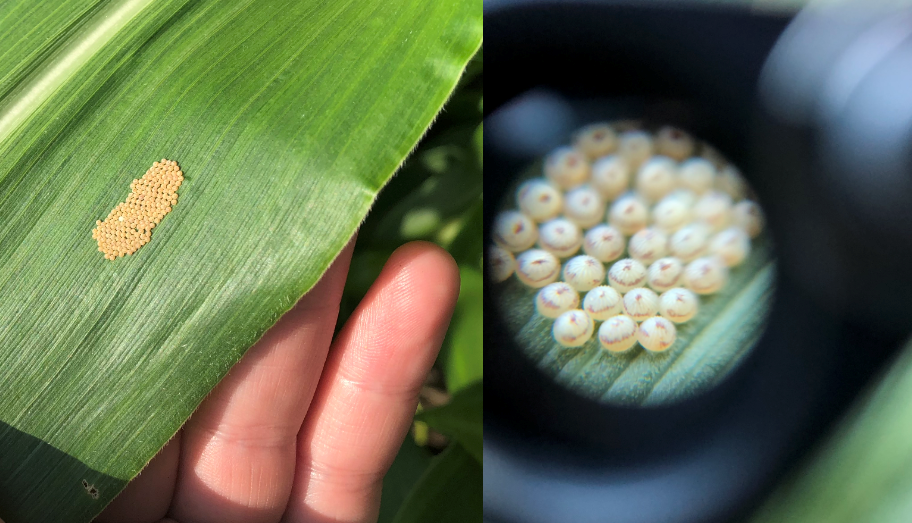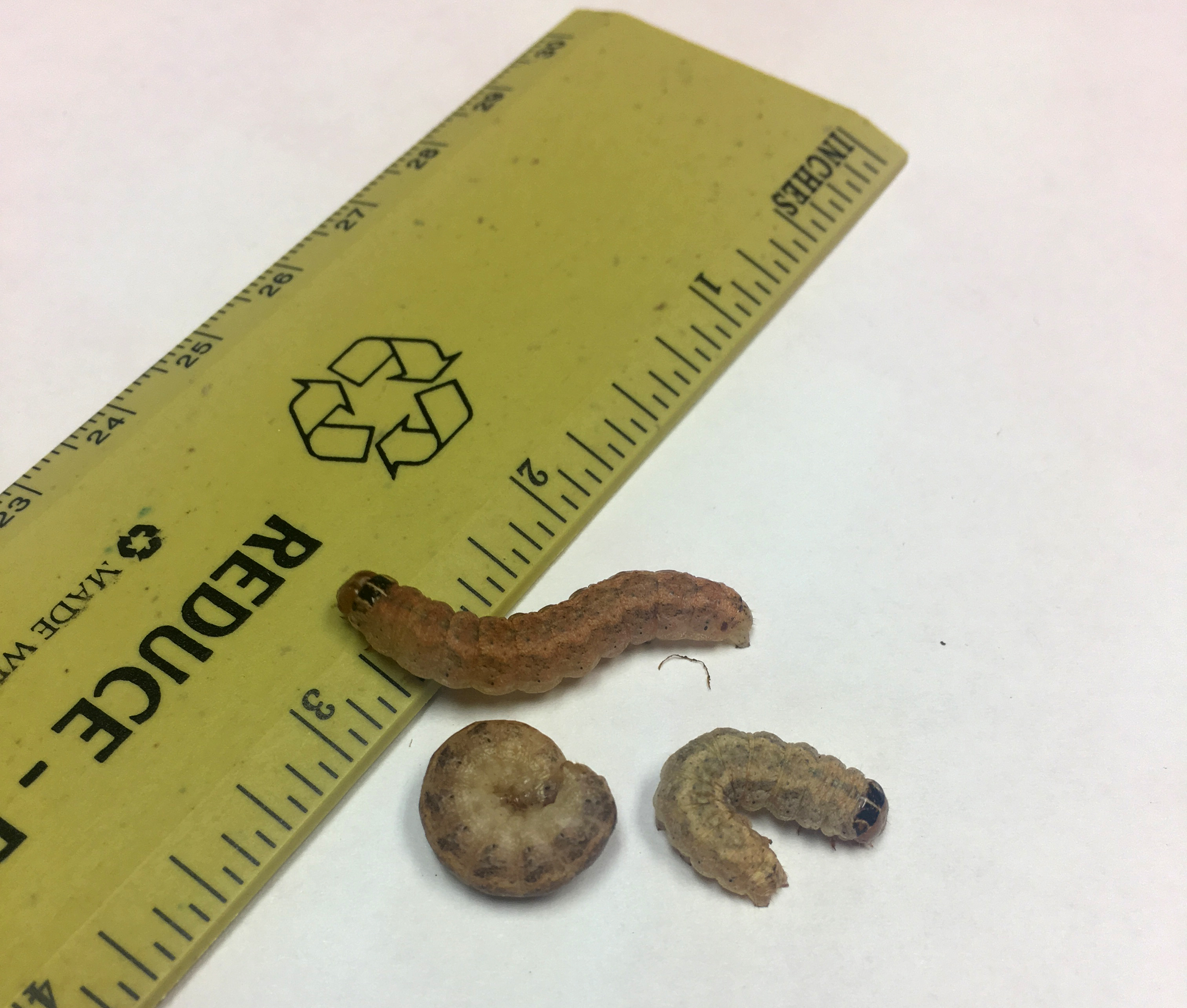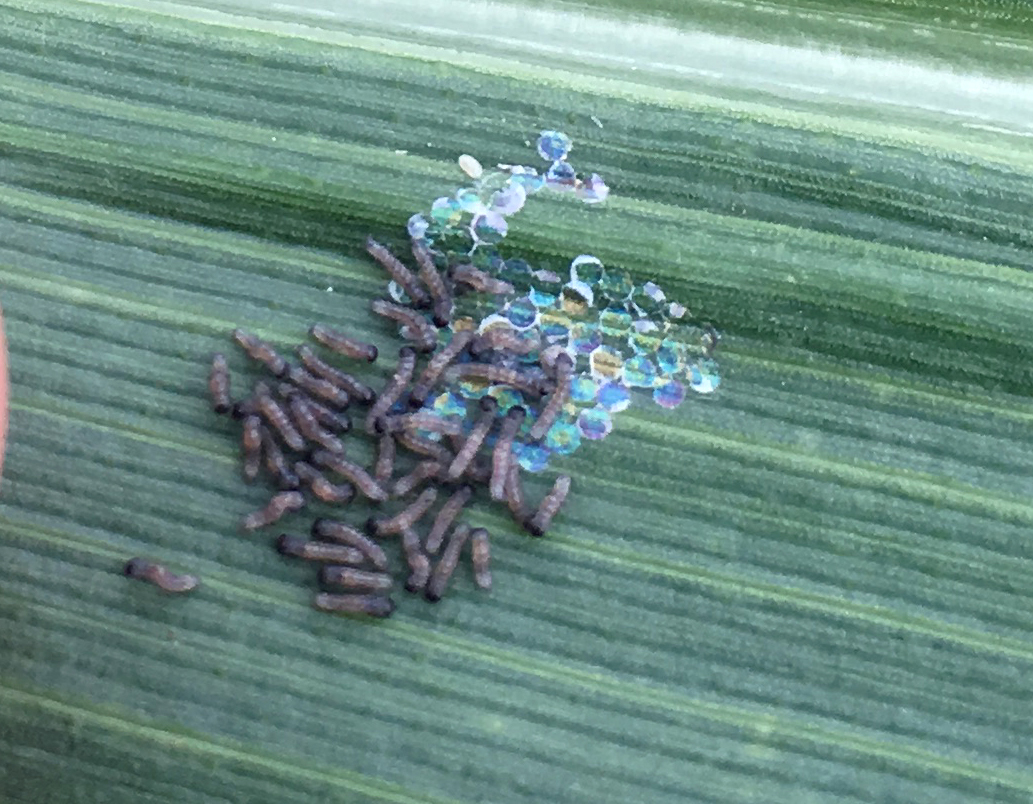Scout sweet corn for western bean cutworms
Western bean cutworm moth emergence and flight is increasing in much of Lower Michigan.

Western bean cutworms can be a serious quality issue for fresh market sweet corn growers. Western bean cutworm larvae are found feeding in ear tips, often leaving behind chewed kernels at the tip as well as frass that many consumers find unappealing. Often, the larvae greet the consumer just as the husk is pulled back from the tip of the ear. As the season progresses and larvae become large, occasionally western bean cutworms will also bore into the sides of ears, leaving holes in husks and chewed kernels mid-way up the ear. This is more common in September than earlier in the season.
Plantings that are pre-tassel during western bean cutworm flight are most at risk for infestation. There is one generation of western bean cutworm per year and it annual flight begins in early to mid-July and extends into the first 10 days of August. Once mated, the western bean cutworm female moth will seek out pre-tassel corn or edible beans to deposit eggs. Sweet corn that has well-developed ears during flight is less likely to be infested; however, tillers (suckers) that have not tasseled may be attractive for egglaying.
Large western bean cutworm larvae can be identified by the dark plate with thin white lines behind the head capsule. Photo by Marissa Schuh, MSU Extension.
Scouting for western bean cutworm should begin in mid-July. Pheromone traps can be used to help detect flight and time scouting efforts in localized areas. Examine pre-tassel corn focusing on the upper three leaves. Tillers and lower leaves may also be sites for egg deposition by the moth as well and should also be examined. Egg masses will be nearly white when first deposited. As larvae develop inside the egg, the color will turn to cream then dark purple just before the eggs hatch.

Western bean cutworm eggs masses can contain anywhere from five to 200 eggs. With a hand lens, western bean cutworms will have lines running vertically down the sides. Photos by Marissa Schuh, MSU Extension.
Western bean cutworm larvae hatching. These larvae will eat the egg remnants then move into the whorl to feed. Photo by Marissa Schuh, MSU Extension.
A threshold of one egg mass per 100 plants is generally used for fresh market sweet corn. Presence of natural predators such as minute pirate bug, ladybugs and green lacewings among others may allow for a higher threshold if eggs are being consumed. Examine egg masses for signs of parasitism as there are many parasitoids that are active on western bean cutworm egg masses.
Generally, growers who are spraying for corn earworm (Helicoverpa zea) and European corn borer (Ostrinia nubilalis) on a weekly schedule at silk emergence will also control western bean cutworms in sweet corn. Any pyrethroid chemistry should provide control of western bean cutworms.
For growers of transgentic sweetcorn, note that not all sweet corn that is carrying Transgenic Bt traits is protected from western bean cutworm. To date, only the varieties with Syngenta’s Attribute II trait package (Aspire, Remedy, Protector) producing the Vip3a protein will protect sweet corn against western bean cutworms.



 Print
Print Email
Email






